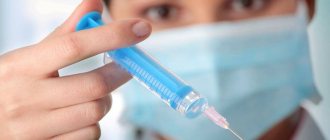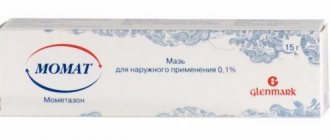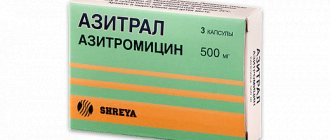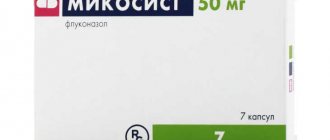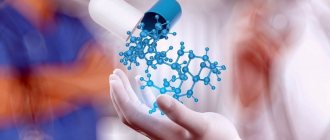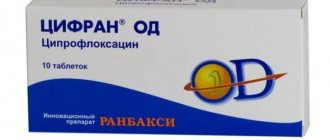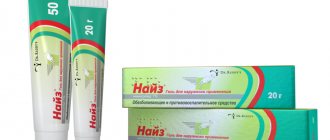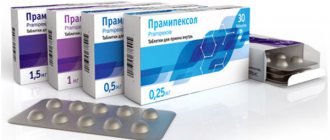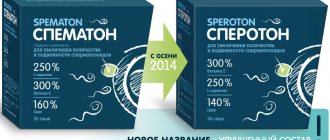pharmachologic effect
The active ingredient of the drug Nise has an analgesic, anti-inflammatory and antipyretic effect.
The drug is effective in processes associated with pain, inflammation and swelling. Nise inhibits platelet aggregation and reduces bronchospasm, which is caused by the action of histamine and acetaldehyde. The drug also has an antioxidant effect and slows down the formation of toxins.
When applied topically, Nise is said to relieve pain and swelling in the joints and reduce morning stiffness.
Drug interactions
If it is necessary to combine Nise with other medications, several factors should be taken into account:
- the drug, when mixed with drugs containing lithium, reduces the effectiveness of the latter;
- when used together with hypoglycemic drugs, sugar level control is required;
- combination with antihypertensive drugs is likely to sharply reduce blood pressure;
- Nise is not used together with anticoagulants and non-steroidal anti-inflammatory drugs due to the high risk of bleeding.
Therefore, when determining the course of treatment, it is necessary to notify the attending physician about all medications used.
Release form
The drug is available in several dosage forms:
- Nise tablets containing 100 mg of the active ingredient nimesulide, 10 pieces in a blister;
- Nise dispersible tablets containing 50 mg of the active ingredient nimesulide, 10 pieces in a blister;
- Suspensions for oral administration, 5 ml - 50 mg of nimesulide, in 60 ml bottles with a dosage cap;
- Gel Nise 1% for external use, 1 g - 10 mg of nimesulide, in aluminum tubes of 20 g.
Possibility of overdose
Ignoring the consumption rate and duration of the therapeutic course of Nise can lead to side effects in an acute condition. Particularly affected by:
- Gastrointestinal tract, up to the risk of internal bleeding.
- Functioning of the liver, kidneys and respiration.
The consequences of an overdose can be eliminated with activated carbon or another absorbent. Further assistance is provided in a hospital setting in accordance with the symptoms that appear. External use of the drug rarely causes an overdose.
Indications for use of Nise
In any dosage forms, Nise is used for:
- Rheumatoid and psoriatic arthritis;
- Radiculitis;
- Articular syndrome with exacerbation of gout and rheumatism;
- Ankylosing spondylitis;
- Osteochondrosis with radicular syndrome;
- Sciatica;
- Arthritis of various etiologies;
- Lumbago;
- Fever of various origins, including infectious and inflammatory diseases;
- Myalgia of rheumatic and non-rheumatic origin;
- Post-traumatic inflammation of soft tissues, bruises and injuries and ligament ruptures;
- Arthralgia;
- Osteoarthrosis;
- Inflammation of tendons, ligaments, bursitis;
- Pain syndrome caused by injuries or in the postoperative period, with menstrual pain, toothache or headache.
Conditions for dispensing from pharmacies
To purchase the suspension at a pharmacy, you must present a medical prescription.
Price
180-193 rub. per bottle 60 ml.
Contraindications
According to the instructions, Nise is contraindicated for oral use when:
- Erosive and ulcerative lesions and bleeding of the gastrointestinal tract;
- Liver dysfunction;
- "Aspirin triad";
- Children under 2 years of age;
- Severe renal failure.
Gel Nise is contraindicated for use in cases of damage to the epidermis, dermatoses and skin infections in the area of application.
Nise in any dosage forms is contraindicated for use during pregnancy, lactation, as well as in case of hypersensitivity to nimesulide, acetylsalicylic acid or other components of the drug.
Nise is used with caution in case of heart failure, arterial hypertension, type 2 diabetes mellitus, visual impairment and renal impairment.
Prohibition on the use of medicine
All forms of the drug have a large number of restrictions on use. These include:
- bronchial asthma, recurrent nasal polyposis and hypersensitivity to acetylsalicylic acid in any combination;
- gastrointestinal problems associated with the risk of internal bleeding;
- inflammation in the intestines in the acute phase;
- hemophilia and other problems affecting blood clotting;
- with decompensated heart failure;
- for acute liver problems;
- the likelihood of developing a hepatotoxic reaction;
- combination with medications leading to hepatoxic reactions;
- with kidney pathology in the progress stage;
- with sensitivity to the components of the drug;
- addiction to alcohol or drugs.
Therefore, it is forbidden to take the drug before carefully reading the instructions and without the knowledge of the attending physician.
Instructions for use Nise
In the form of tablets or suspension, the drug is usually prescribed to adults twice a day, 100 mg, up to a maximum of 400 mg. The course of treatment is 10 days.
It is recommended to take Nise suspension and tablets before meals, dispersible tablets after meals, after dissolving them in a teaspoon of water.
Children 2-3 years old are allowed to take Nise according to the instructions only in the form of a suspension, 3-12 years old - in the form of a suspension and dispersible tablets, over 12 years old - in the form of tablets.
A single dose for children up to 40 kg is calculated depending on body weight - 3-5 mg per 1 kg of body weight. Take the drug 2-3 times a day. If you weigh more than 40 kg, you can take an adult dose - 100 mg twice a day.
Caution should be exercised when taking Nise orally with lithium, digoxin, diuretics, antihypertensive drugs, phenytoin, methotrexate, anticoagulants, cyclosporine and oral hypoglycemic agents.
Nise gel, without rubbing, is applied in a thin layer up to 4 times a day to painful areas.
The maximum daily dose of the drug is 30 g. The course of treatment with Nise gel is 10 days.
Reviews about the drug
Andrey. It was necessary to remove the wisdom tooth, because for a month I was tormented by pain from its eruption. Before and after removal I took Nise tablets. The pain did not subside immediately, but became dull.
Igor. After spinal surgery, the doctor prescribed Nise tablets and gel to eliminate pain. The effect exceeded all expectations.
Olga. Every month I feel pain in the lower back and abdomen during my period. Nise tablets help improve the condition. It is enough to take one dose a day to normalize your well-being.
© 2021 – 2021, Evgeniy Nikolaevich Konoplev. All rights reserved.
Side effects
According to reviews, Nise, when taken orally, can cause the following side effects:
- Heartburn, nausea and vomiting, stomach pain, erosive and ulcerative lesions of the gastrointestinal tract, diarrhea, increased activity of liver transaminases and toxic hepatitis;
- Fluid retention, hematuria, prolongation of bleeding time;
- Headache and dizziness;
- Anaphylactic shock, skin rash or bronchospasm;
- Leukopenia, thrombocytopenia, anemia or agranulocytosis.
When using Nise in the form of a gel, hives, itching, peeling, and temporary changes in skin color are possible.
According to reviews, Nise, when applied to large areas of the skin, can cause the development of systemic adverse reactions.
In case of an overdose of the drug Nise according to the instructions, convulsions, impaired renal function, respiratory depression, liver failure and increased blood pressure are possible.
How to take pills correctly
For a number of diseases there are no strict restrictions on Nise therapy. However, treatment with this drug requires great caution when:
- IHD;
- congestive heart failure;
- dyslipidemia;
- gastrointestinal ulcers;
- diabetes mellitus;
- problems with peripheral arteries;
- somatic disorders.
The doctor can also warn about possible dangers when prescribing medication for older people. Taking Nise poses a potential danger to smokers and people taking NSAIDs for a long time.
In case of severe kidney problems, the specialist will prescribe the drug in minimal dosages. If during treatment the patient feels a decrease in visual acuity, the drug should be stopped. Similar actions are required if signs of liver dysfunction are visible. Since Nise may cause fluid retention, it is used with caution in the treatment of persons suffering from hypertension. All these factors are taken into account when determining the possibility of carrying out therapy, the duration of the course and dosages of tablets.
Alcohol compatibility
Taking Nise together with alcoholic drinks is extremely undesirable, since both the drug and alcohol affect the liver. The simultaneous use of Nise and strong drinks increases the risk of liver damage and the development of toxic hepatitis.
On the pharmaceutical market, Nise has a fairly extensive list of substitute drugs. Cheap analogues of Nise tablets are Nimesulide and Aponil. Analogues of Nise gel: gels Nimulid, Sulaydin, Voltaren, Diclofenac.
Note that in terms of the severity of the anti-inflammatory effect, Nise is superior to Indomethacin, Diclofenac, Ibuprofen and Piroxicam. Nise relieves pain in the same way as Ibuprofen, but, for example, Indomethacin is stronger and better relieves pain. But the antipyretic effect of it and Asperin, Ibuprofen and Paracetamol is weaker compared to Nise.
Video 1 - Nise (tablets, gel, sachet) - instructions for use
Lactation
Often a woman who is breastfeeding is faced with the question: is it possible to take painkillers for a headache without fear of harming the baby?
If the pain is not very severe, you can try non-drug methods, for example, walking, showering, sleeping, massage, however, if the pain is severe enough and interferes with caring for the baby, you should take medicine.
Remember that pain that arises for the first time with characteristics that are new to you is a reason to consult a doctor, and not to suppress it with medications.
Painkillers can be used during breastfeeding. Paracetamol and ibuprofen (Nurofen, Mig, Faspik) are considered the safest. They practically do not pass into breast milk and cannot harm the baby.
The composition of combined analgesics (ibuklin, citramon, solpadeine, pentalgin, askofen, etc.) includes acetylsalicylic acid, metamizole sodium (analgin), caffeine - they have an average degree of safety for the child. The decision about the possibility of their use is made depending on the age of the baby and the frequency of feedings.
For migraines, start with paracetamol or ibuprofen; if necessary, you can use sumatriptan - it is allowed for breastfeeding.
We invite you to familiarize yourself with Epstein-Barr virus (EBV), qualitative determination of DNA
Some painkillers are prohibited for breastfeeding, for example, nimesulide (Nise, Nimulide, Nimesil).
If you have a headache almost every day, you should not take painkillers very often. It is worth consulting a doctor and choosing non-drug or drug methods of preventive therapy (yes, there are drugs for long-term use approved during lactation) depending on the type of headache.
Description and composition
The main active ingredient of the drug Nise is nimesulide. The concentration of the substance per tablet is 100 mg.
The following substances act as auxiliary elements:
- magnesium stearate;
- talc;
- calcium hydrogen phosphate;
- corn starch;
- colloidal silicon dioxide;
- microcrystalline cellulose;
- sodium carboxymethyl starch.
